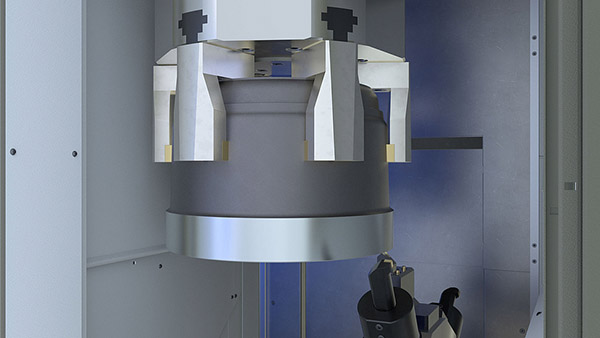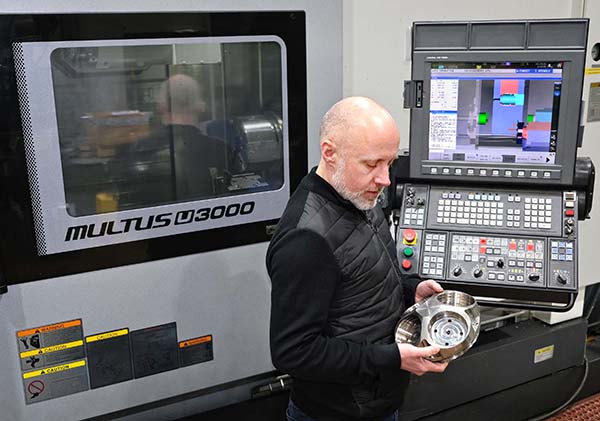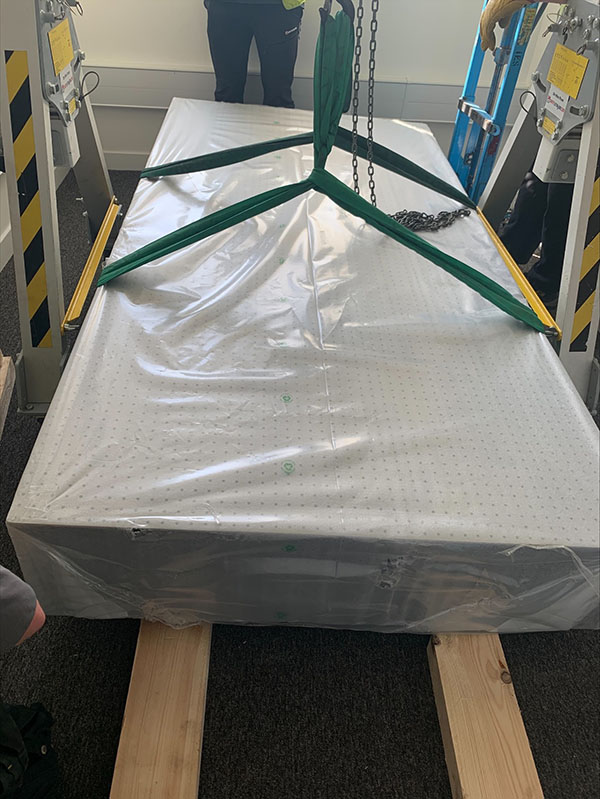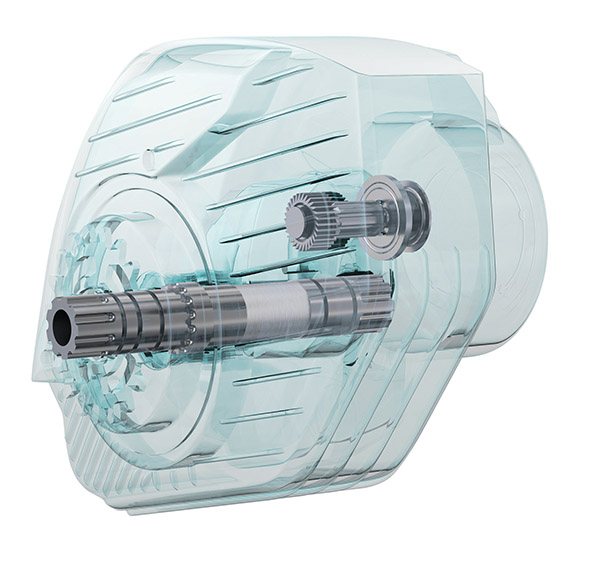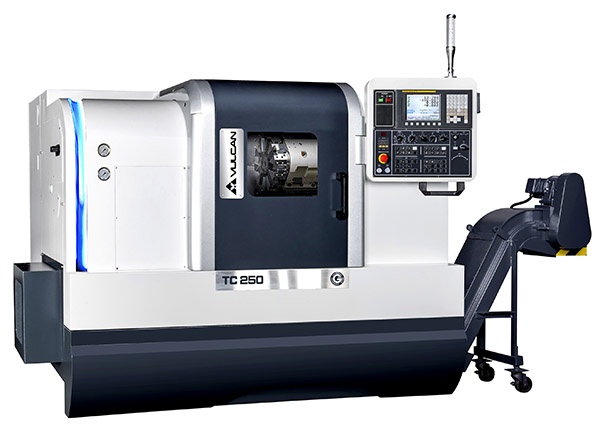
EMAG has developed a compact manufacturing solution based on its VL8 vertical turning lathes that expedites the machining of large brake drums for a leading manufacturer in the commercial vehicle segment.
The vertical structure of EMAG pick-up machines is among the factors that helped to compress the entire machining process into just three operations. EMAG provides all components of the solution, including the machines, robotic handling, peripherals, clamping devices and tools. The customer therefore receives a co-ordinated system, designed for maximum productivity. EMAG also takes care of service and maintenance.
In terms of the process, raw parts arrive on pallets, from where the robotic rail automation system takes over all component handling tasks. In Op 10, which takes place on two machines due to the cycle time, all turning work on the first side of the brake drum is performed, both inside and outside. The part is turned over between Op 10 and Op 20, allowing the bolt ring on the brake drum to be machined, including drilling the holes for the bolts. This is possible via a turret on which driven tools can be used. Op 30 follows with the final balancing work, which is also performed on a system developed by EMAG.
The flexible system is capable of adding another station, such as a measuring station, before the finished part is stacked on its pallet. Also, the VL8 machines from EMAG can be optionally equipped with measuring probes that can carry out pre- and post-process measurements.
EMAG’s VL8 offers a chuck diameter of 500 mm, while the pick-up spindle picks up workpieces with diameters as large as 400 mm.
For further information
www.emag.com






